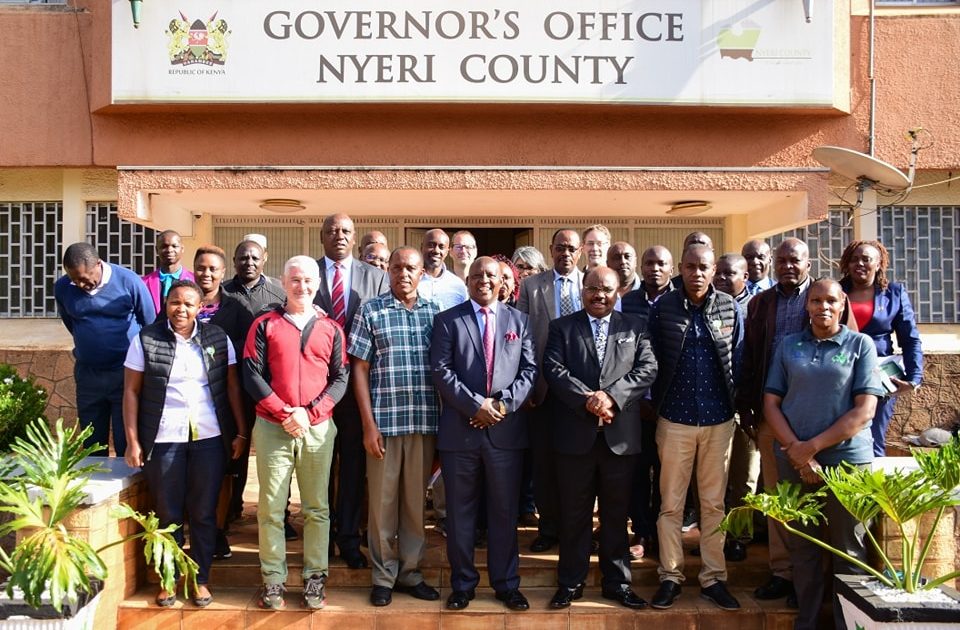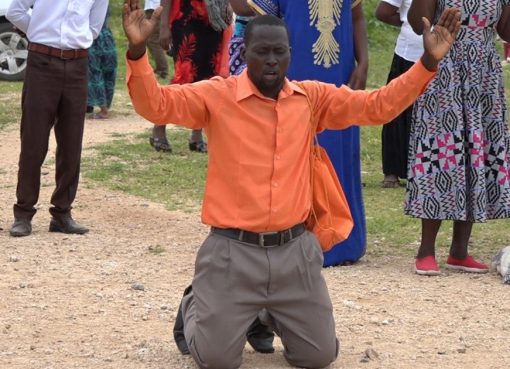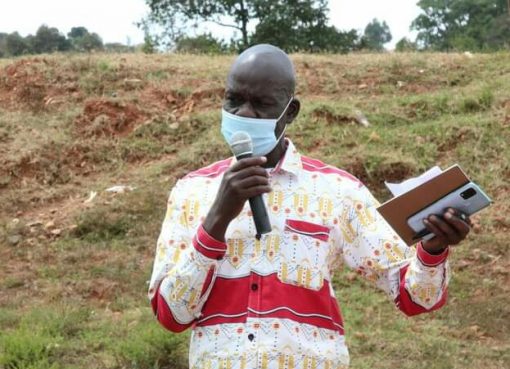Nyeri Governor Mutahi Kahiga is calling for inclusion of county governments, when drafting policies for combating environmental degradation.
Kahiga argues that counties have for years lagged behind as far as addressing ecological induced changes is concerned, since much of policy making is done in Nairobi.
The governor therefore said the gap has hampered implementation of programs that are in tandem with the challenges affecting the locals.
Kahiga made the remarks, when he met a delegation from the World Bank Mission on the Kenya Watershed Services Improvement Project (KEWASIP) that had paid a courtesy call at his office.
“We have really suffered from what we call centralized thinking. For many years, Nyeri as a county has suffered provision of wrong fertilizers, provision of wrong drugs just because some decisions are made in Nairobi. But now when we come to the ground with such groups (KEWASIP)they will be able to design the programs based on information that has been collected from the horse’s mouth,” he said.
The Governor was also upbeat that the county will benefit following the visit in terms of funding to help in the restoration of key water catchment areas.
He observed that having direct engagements with local and external donors in financing projects such as Climate Smart Agriculture is the way to go in addressing challenges of climate change.
“We will also have the opportunity to engage with the community at the level, where they will get their needs addressed. So, this is quite a wonderful improvement for many World Bank group projects we know. Sometimes as a county we have issues of negotiations done on our behalf by others,” he pointed out.
On his part, KEWASIP head of delegation represented by the National Environment Trust Fund (NETFUND) Resources Mobilization Manager Andrew Machora said the Government had roped in relevant stakeholders in spearheading efforts that will see the restoration and preservation of crucial water sources in the country for posterity.
Machora said the team had already visited Laikipia County, where it met with relevant players including officials from the Kenya Forest Service, Kenya Wildlife Service, Community Forests Association as well as members from Water Resources Users Association.
He said the team would undertake similar deliberations in Nyeri that will also help identify any water tower that was at the risk of drying up.
“We are here with the World Bank team as well as government representatives for State Departments of Environment, Forestry, Water and Agriculture. We are here on a scouting mission; a program we are designing wit the World Bank called Kenya Watershed Services Improvement Project. It’s one of the programs that is going to contribute to the National Ecosystem and Landscape Restoration Strategy. Part of the goal is to support the President’s agenda of increasing tree cover to 30 per cent by 2030.We are here to engage with various stakeholders both at the national and county level and to know what they are undertaking as far as ecosystem restoration is concerned,” he said.
KEWASIP is a five-year programme financed by the WB, whose aim is to reclaim degraded landscapes and enhance watershed services, foster climate change resilience and improve livelihoods.
Among its key strategies include restoration of 10.6 million hectares of degraded forests and rangelands by the year 2032.
Others present included Water, Environment and Climate Change CECM Fredrick Kinyua, Chief Officer Bernard Kiama, County Secretary Ben Gachichio, Agriculture Chief Officer Wilson Maringa and his counterpart at the governor’s office Lucy Ndumba.
Last month, Kahiga challenged poor countries to come up with locally-bred policies to help in absorbing funds earmarked for addressing effects of climate change.
The sentiments came two months after leading global polluters led by the EU, Britain and the US pledged around $ 400 million as reparation for poor countries currently reeling from the impacts of climate change during the COP 28 meet in Dubai last year.
The promise was hailed as one of the biggest wins for impoverished states (majority in Africa), who have continued to bear the brunt of deteriorating climatic conditions blamed on excessive carbon emission from industrialized nations.
Africa contributes less than 2 percent of the entire global greenhouse gases but ironically, it is on the receiving end of worsening climate conditions than any other continent.
Now Kahiga says there is a need to formulate a different model of using money meant for climate mitigation where beneficiaries are allowed to employ the funds in accordance to their geographical locations and immediate needs.
He has also faulted the Financing Locally-Led Climate Action (FLLoCA) program, which he argues restricts how money sent to counties for addressing climate change mitigation measures should be used and ends up being spent on less urgent programs such as capacity building.
“When we look at the kind of financing that is coming through Financing Locally-Led Climate Action for example, every county got Sh 11 million.
I am sad to tell you that instead of the money being spent in buying seedlings for planting, it went into capacity building. You need to tell me why we need Sh11 million to capacity-build the people of Nyeri, who are leading in this county in terms of forest cover. We need our only African solution as opposed to donor funding that is coming with ridiculous conditions and conditionalities,” he said during a Climate Change public talk session held at the Dedan Kimathi University of Technology, hosted by Citizen TV.
FLLoCA is a five-year program funded by the Government of Kenya, the World Bank and other donors whose aim is delivering locally-led climate resilience actions and strengthening county and national governments’ capacity to manage climate risk.
According to the Governor, Nyeri has so far sunk more than Sh100 million in climate-friendly projects and managed to spearhead the planting of more than five million tree seedlings in efforts aimed towards cushioning the county against the effects of climate change.
Part of that money has been channeled towards the issuance of assorted fruit seedlings to farmers as long-term solutions in addressing food insecurity.
“I really must appreciate the residents of Nyeri County. After President Dr. William Ruto himself announced a national tree planting day last year, Nyeri had by then planted five million trees.
The County government of Nyeri has spent in excess of Sh 100 million so far in provision of avocado seedlings free of charge to farmers to plant so that even as we think of the tree, we are also thinking about food security,” he added.
Nyeri has already come up with Ward Climate Change Committees to help sensitize the public on the effects of climate change.
The move followed the undertaking of a Participatory Climate Risk Assessment Change in all the 30 wards that gave birth to the Nyeri County Climate Change Action Plan (2023-2027).
The above was developed in compliance with the National Climate Action Change Act of 2016 that mandates counties to integrate climate change actions into their development programs and governance structures.
Scientists link the severity and frequency of natural disasters such as droughts, floods, locust invasions and the COVID-19 pandemic to climate change.
They estimate the cost of mitigation and adaptation and compensation for loss and damage to be about $580 billion in 2030 a figure expected to hit the $1.8 trillion mark by 2050.
This year’s UN Climate Change Conference (UNFCCC COP 29) is slated for November 11 to November 24 in Baku, Azerbaijan.
By Samuel Maina





